The Super Bowl is arguably advertising’s biggest forum. With a skyrocketing viewership, it is every marketer’s dream. Unfortunately, there are no free lunches in the world of marketing. For example, the ticket’s face value for a 30-second ad run was over $5 million in 2021. Moreover, these costs exclude production costs, additional executions in digital and social space, game-day monitoring, and other expenses. If you take a rough estimate, the cost of making a Super Bowl ad can be beyond $20 million.
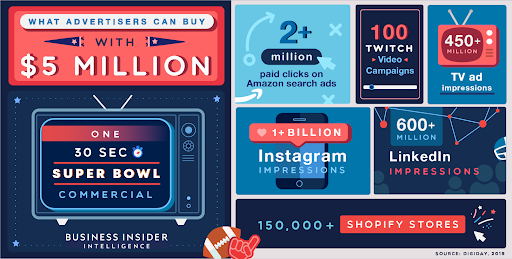
The 2021 Sam Adams spoofs came as a shock when Anheuser-Busch backed out in advertising its iconic Budweiser brand during the Super Bowl for the first time since 1983. Seizing the opportunity to engage in ambush marketing, Sam Adams avoided forking out $5.5 million for a 30-second ad nationally during the game; instead, they aired the spot in NY and Boston media for just $700,000.
Ambush marketing involves riding on the fame of an important event or campaign without actually paying for or participating in the sponsorship. Vendors use this marketing tactic to get free promotion and compete with other brands paying for the sponsorship without dishing out big bucks themselves.
Breaking Down Ambush Marketing
In ambush marketing, a company or product rides on the publicity of major events without contributing to the financing of the event. Let’s understand with an example.
Have you ever wondered when you’re watching your favourite team play, and every time the camera zooms to see the coach’s reaction, there’s always a group of people wearing the same t-shirts, sitting behind the bench? This group is promoting a brand that hasn’t officially sponsored the game.
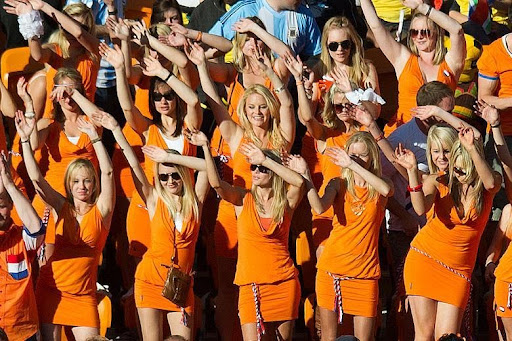
Ambush marketing is used to “sail over the waves” of prominence and fame of a headlining event, syncing your promotional activities around it, without paying fees to the organizer to become an “official” sponsor in a certain product category.
What Are the Types of Ambush Marketing?
This marketing technique can be classified into two major forms further divided into different categories:
Direct Ambush Marketing
Under direct ambush marketing, advertisers promote their brand as a part of an event, weakening the brand awareness of official sponsors and their respective campaigns. Direct marketing is major of four types:
Predatory Ambushing
Under predatory ambushing, a predator brand intentionally poaches a competitor’s advertising efforts to gain market share and confuse the audience.
In 1997, Pepsi was the official sponsor of the Asia Cup (Cricket). Still, Coca-Cola captured the television sponsorship rights, leaving the audience in a dilemma with who the original sponsor was.
Coattail Ambushing
Under Coattail ambushing marketing strategy, a brand tries to associate with an event by using a link instead of becoming an official sponsor. A notorious example of coattail ambushing is when in 2016, Puma tried to associate itself with the Rio Olympics by sponsoring the most celebrated athlete Usain Bolt.
Self Ambushing
Under self ambushing, the event’s official sponsor performs activities that are past the terms of the sponsorship contract. For example, in the 2008 UEFA European Championship, Carlsberg, the event’s official sponsor, offered goodies with the Carlsberg logo at the event.
Under self ambushing agreement, Carlsberg advertisement infringed the other company’s rights that permitted distribution of freebies to the audience at the tournament.
Trademark Infringement
Trademark infringement is when a brand utilizes properties, logos, symbols, taglines to raise the market share. However, its competitor has generated those properties, taking many communication efforts. Let’s understand with an example. Red Cross as one global signage represents hospitals and other medical services. Nonetheless, it is a property infringement of the international organization of the Red Cross.
Indirect Ambush Marketing
It uses imagery related to an event in advertising campaigns. This is to invoke an intellectual connection with a brand without any mentions. Here, the company’s approach isn’t aggressive like direct ambush marketing, as the company’s intention isn’t to grab the spotlight but gain some exposure or marketing efforts of other brands.
Associative Ambushing
Under associative ambush marketing, unique slogans or images are shielded by intellectual property laws and create an illusion that the company has links to a sporting event or property.
Distractive Ambushing
Distractive ambushing distracts the audience by positioning a promotional undertaking like setting up stalls at or near an event without specific reference to the event.
Parallel Property Ambushing
Parallel property ambushing is where one company finances an event identical to other events that their competitor’s finance. Here the company aims to redirect customers’ attention from the preceding event and capitalize on the main event’s goodwill.
Insurgent Ambushing
Insurgent ambush marketing executes an aggressive promotional campaign like a flash mob at an event to amplify your brand awareness and deflect the official sponsor’s attention or the event itself.
Why Should you Use Ambush Marketing in Your 2022 Marketing Campaign?
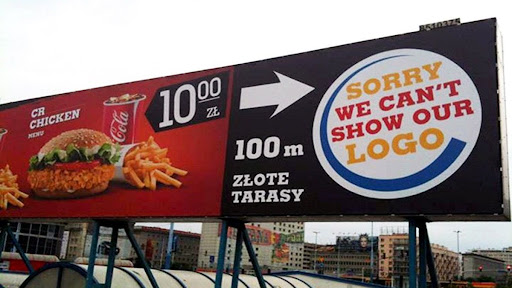
Today most ambush campaigns have a single goal- to connect their brand with the popularity of a determined event without signing a sponsorship agreement. However, ambush marketing offers a rather different approach to developing a marketing campaign whilst offering full creative freedom and flexibility.
Brands integrate different visual forms and wordplay in response to advertising campaigns framed by official sponsors at an event. With ambush marketing, companies often integrate methods that go beyond the scope of a brand’s established guidelines.
Brands use ambush marketing in myriad ways, from PPC advertising to vast billboards on the most crowded city’s streets. Now that you understand some benefits of what your brand can yield after implementing ambush marketing, it’s time to find out whether it’s within the legal framework or not.
With ambush marketing, you can:
Frame Cost-effective and Clever Marketing Strategies
Ambush-styled marketing is originally a scheme attacking others by responding or leveraging their current campaigns to promote the brand. Therefore, your ambush marketing strategy needs to be creative and “out of the box” to stand out from competitors.
The ambush marketing campaigns bring laughter and open discussion on social media channels, making this form of marketing memorable.
Make Off-Script Campaigns
While marketing and campaigns, marketers always have to be concerned about the synchronization of advertisement. Whether you’re planning to expand digital marketing or offline advertising, cohesion in the display is important.
However, brands get creative and off-script independence when it comes to ambushing campaigns. Off-script allows marketers to be different from the usual tone, text or style. In addition, brands can use tools or techniques beyond the scope of an organization’s existing advertising guidelines.
Change Consumer Perceptions
Ambush marketing can change consumer conception and upgrade brand credibility if they do well. Even when the brand lacks popularity among consumers before, a good ambush marketing campaign can still be well-known, and marketing campaigns can still generate and exhibit new brand values.
What Are Some Pitfalls of Ambush Marketing?
If you’re planning to use ambush marketing in your marketing strategies, here are some of the disadvantages that you should consider.
Ambush Marketing is Costly
Ambush marketing is perhaps the main downside of marketing, making many brands hesitate to launch an ambush-style advertising strategy. It is undeniable that ambush offers chances to increase the market share and the total profit of a brand, but there are no free lunches in the world. Ambush marketing comes with hefty prices.
Ambush Marketing ROI Calculation is Difficult
Another pitfall of ambush marketing is difficulty in calculating the ROI. When calculating the return on investment in marketing campaigns, you can’t use the same formula as typical campaigns, which means assigning multiple values to brand awareness or positive consumer sentiment.
Monitor mainstream and social media for links, mentions or other engagement metrics; you can gauge the total reception of an ambush campaign.
Time and Space in Ambush Marketing
Ambush marketing is more than launching a cheeky marketing campaign but choosing a suitable time and Space. Besides potential costs involved, ambush-style advertising plans require quick reaction coordinated planning. For example, when an ambush marketing campaign is launched, and the first result is worth expecting, the success and effect of the campaign rely completely on the neighbourhood advertisements.
Some Notable Examples of Ambush Marketing
Samsung Stole the Apple Spotlight
In October 2011, Samsung launched Galaxy S II simultaneously as Apple launched iPhone 4S.
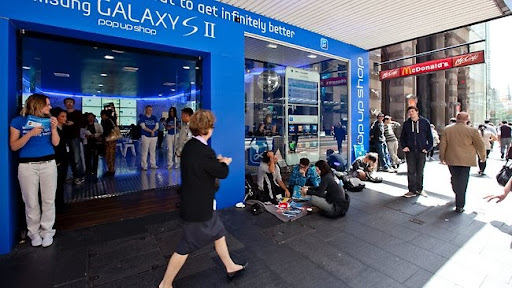
Whenever Apple brings out new products, customers line up outside its store. This time, Samsung stole the spotlight from its competitor by setting up a pop-up store near Apple’s flagship Sydney site.
Samsung created a huge difference in price while selling Galaxy S II at AUS$2 instead of the near AUS$850 full retail price. Naturally, customers look for lower prices, so the pop-up store of Samsung attracted many customers despite only opening for three days, resulting in a longer run throughout the week than Apple’s store.
Audi Vs BMW Street Sight in Santa Monica
The famous street fight between two giants in the automobile manufacturing industry is Audi and BMW. Such an interesting billboard war occurred in Santa Monica and California.
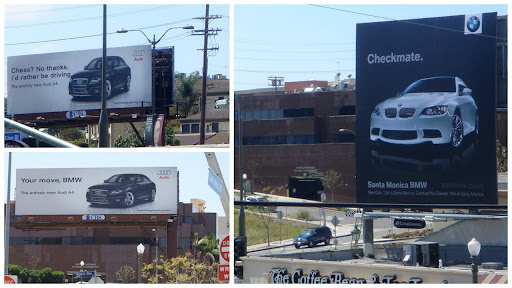
In 2009, the war started right after BMW held a tournament in Wisconsin and promoted an advertising campaign with a phrase promoting the tournament via an advertising campaign with a slogan meaning this tournament would be like a chess game.
Audi decided to set up a billboard for its A4 with the words “Chess? No thanks, I’d rather be driving” to compete with BMW’s slogan. However, the fight ended when BMW shared, “Your pawn is a match for our king”.
While BMW is surely the winner thanks to its large number of advertising billboards, Audi claims its billboard was up for almost a year before BMW.
Holden Big Red Blimp
Australian automaker Holden had its Big Red airship flown to promote its product and ambush the official sponsor of the events. Holden was quickly criticized for using the blimp.
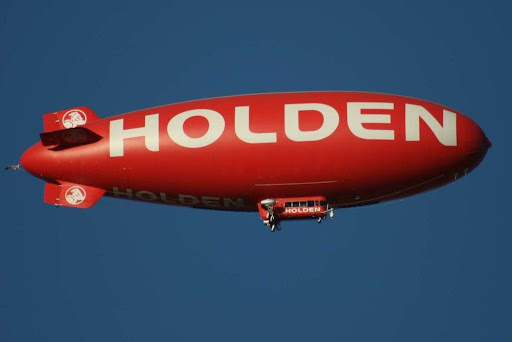
One year after that, with more than 400 flights, Queensland passed a law specifically banning the BIg Red blimp from different events in the region, which Holden was not officially a part of.
2006 FIFA World Cup
In the 2006 World Cup, Nike created a successful ambush marketing campaign; they launched a social networking website for the world’s soccer fans with the slogan “Joga Bonito” campaign.

Nike claimed their website and sponsorship of the Brazilian soccer team combined with the same exposure as Adidas. They didn’t bear the hefty price that Adidas had to as an event’s official sponsor.
Wrapping Up
Ambush marketing methods bring about advantages, but the cost involved can also go out of estimated budgets for many brands. Ambush marketing is creative and legal, and if you apply it perfectly, it can pay you off well. However, if the idea lies outside the legal framework and the payoff is uncertain, it’s better to dodge the bullet.
